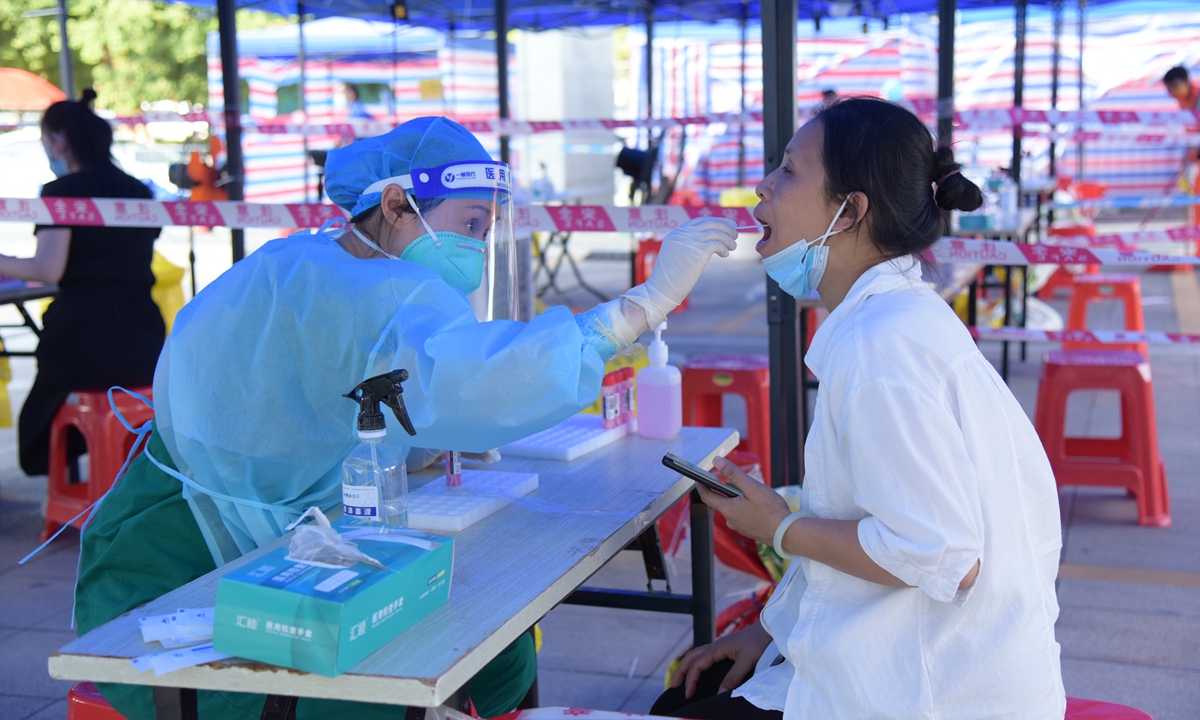
A resident receives nucleic acid test in a residential community in Dongguan, South China's Guangdong Province, on September 15, 2022. Photo: IC
A new Omicron variant that has caused multiple infections in Shaoguan, South China's Guangdong Province, has been identified as the subvariant BA.5.1.7. It's the first time the variant has been detected in the Chinese mainland.
According to the Shaoguan government, there have been a number of imported COVID-19 cases with multiple sources and multiple chains in the city, leading to successive positive cases in Shaoguan.
The latest flare-up in the city has two major transmission chains respectively caused by Omicron variants BA.5.1.7 and BF.7, both of which are highly infectious with fast spreading speed, a statement from the official social media account of the local people's government said on Sunday.
The subvariant BA.5.1.7 - discovered in more than 100 countries and regions - was detected in the mainland for the first time, said Li Shujian, deputy director of the local disease prevention and control center.
The highly contagious BA.5.1.7 caused several infections on the same transmission chain in Shaoguan during a dinner gathering on October 1, according to the local government.
The subvariant BA.5 that has dominated coronavirus cases in the US, the UK and other countries and regions is the most easily transmissible COVID variant to date, able to evade previous immunity from COVID infection and vaccination, according to Western media reports.
Despite that the two variants that caused the latest flare-up in Shaoguan are highly contagious and transmissible and can easily evade previous immunity, they both need close contact, the mutual space or other channels to achieve transmission, Li said.
At present, temporary intensified epidemic prevention and control measures will be implemented in part areas of Wujiang and Zhenjiang districts in the city till October 24 and residents who want to leave the city have to present negative nucleic acid testing results obtained within 48 hours.
The temporary decisive and strengthened epidemic prevention and control measures are taken in a bid to reduce the number of people gathering and therefore cut off the transmission of the virus and reduce the risk of the spread of the epidemic, Li said, noting that the battle against the epidemic is in a stalemate, and the prevention and control situation is grim and complex, since mass screening at community has still spotted hidden cases, which brings uncertainty to the anti-epidemic work in the city.
Guangdong reported 27 confirmed cases and 21 asymptomatic infections on Saturday.
Global Times




